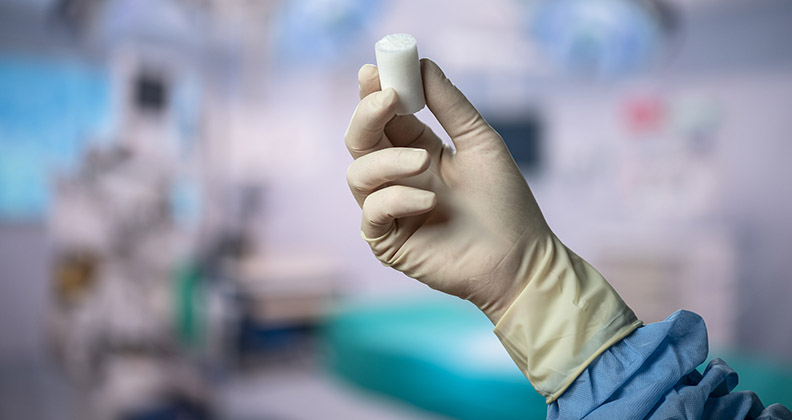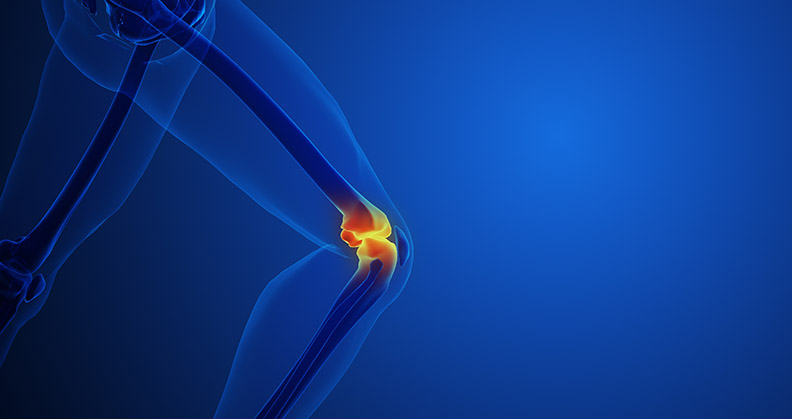
Conventional orthopedic implant designs, like press-fit and cemented fixation, have led to various complications, including implant failures and post-surgical pain which can create heavy financial burdens for both patients and health systems. Until recently, little movement has been made to evolve implantation and extraction techniques to address the high impact on bones, joints and surrounding tissues.
Cemented implants are fixed to the bone using polymeric adhesive, and press-fit fixation is obtained by pressing the implant into the bone by impaction. Both types of implants can cause loss of bone density leading to fractures, implant loosening due to bone-to-implant adaptation and a high risk of blowout fractures when removing an osseointegrated implant.
José Expósito-Ollero worked with his Ph.D. thesis directors in 2015 to conceptualize a technology that would disrupt traditional implant methods. From their efforts and years of research, NELA Biodynamics and its flagship technology, R-Evolution, was created. Dr. Ollero serves as NELA Biodynamics CEO. His Ph.D. directors – José Albelda Vitoria, Ph.D., Senior Engineer of the Polytechnic University of Valencia, and Antonio Silvestre Muñoz, Ph.D., Head of Orthopedic Surgery of Clinic Hospital of Valencia – are company co-founders.
“It was clear to me that I wanted to investigate the improvement of current solutions for intramedullary stems, and I put together the best team I had at my disposal to make it a reality,” Expósito-Ollero said. “We look to improve two main issues: avoid the use of rasps and hammering and the use of bone cement, reducing the initial traumatic damage and bone necrosis; and reduce the high rigidity of the current implants by combining polymeric and metallic materials to improve the physiological bone remodeling process.”
A New Approach
NELA BioDynamics’ R-Evolution technology is launching a joint replacement implant that aims to solve the current limitations present in the implantation, service and replacement phases. The orthopedic startups’ goal is to reduce intervention time and traumatic damage and to speed up post-operative recovery.
R-Evolution combines polymeric and metallic materials into a modular intramedullary implant, reducing implant rigidity and improving the physiological bone remodeling process.
“We are developing an implantation technique that allows the implant to be inserted into the intramedullary canal with clearance, expanding once inside, avoiding the need to impact the stem or using bone cement, thus changing the traditional concept of implantation of the intramedullary prosthesis,” Expósito-Ollero said. “Furthermore, NELA introduces the concept of densitometric adaptation. It is the only device that allows the fixation force to be adapted to the bone density of each patient, personalizing the treatment, being one of the most disruptive aspects offered by the NELA implant.”
During NELA Biodynamics’ Histological study in 2021, the implant proved to increase the tolerability of the host to the implant and reduce inflammation, fibrosis, neovascularization and granulocytic reaction. The results indicate that the procedure and implant could be a good candidate for outpatient surgery.
“The main goal is to adapt this stagnant sector of joint replacement to the new characteristics and lifestyle of current patients, focused on the key aspect of longevity increase and the active aging population,” Expósito-Ollero said.
Since hammering or bone cement are not needed to fixate NELA Biodynamic’s intramedullary implant, the overall safety of orthopedic surgeries is increased and the probability of microfractures is reduced. Additionally, the reduced rigidity of the implant improves the physiological remodeling process, allowing for easier removal if needed.
A Platform Technology Built for Expansion
Both literally and figuratively, the R-Evolution technology is built for expansion. NELA Biodynamics has received two patents that protect a wide range of applications: the intramedullary implant and a percutaneous collar, both issued in the U.S. and Europe.
The intramedullary implant patent protects applications for joint replacements such as hip (the first application in development), knee, shoulder and ankle; a nail for fracture fixation; and a stem for exo-prosthesis for amputees. In the latter application, the implant can be combined with the percutaneous collar, their second patent, to reduce stoma infections.
NELA Biodynamics is also working on a third patent for a surgical instrument to perform the proximal geometry of the implant and control anteversion without using rasps.
“The developing stem technology can be adapted and used in any application where an intramedullary stem is required,” Expósito-Ollero said. “To be competitive in a sector dominated by big players and cover the main market in the orthopedic sector, we intend to develop a complete catalog of applications in the next seven years in a phased manner.”
What’s Ahead
NELA Biodynamics is currently in the preclinical stage and is in an investment round destined to complete the preclinical stage. They intend to complete all applicable preclinical testing in 2022. Their commercialization timeline includes commencement of clinical trials in mid-2023 and obtaining FDA clearance and approval undre the CE Mark by 2025.
In the meantime, the company is making new connections through various startup programs. NELA Biodynamics recently became a member of the Mayo Clinic Innovation Exchange.
“We are starting to make our first steps into the U.S.’s entrepreneurial ecosystem by being accepted into the Octane LaunchPad SBDC accelerator that ranks in the top five out of more than 900 SBDCs in the United States,” Expósito-Ollero said.
HT
Heather Tunstall is a BONEZONE Contributor.




